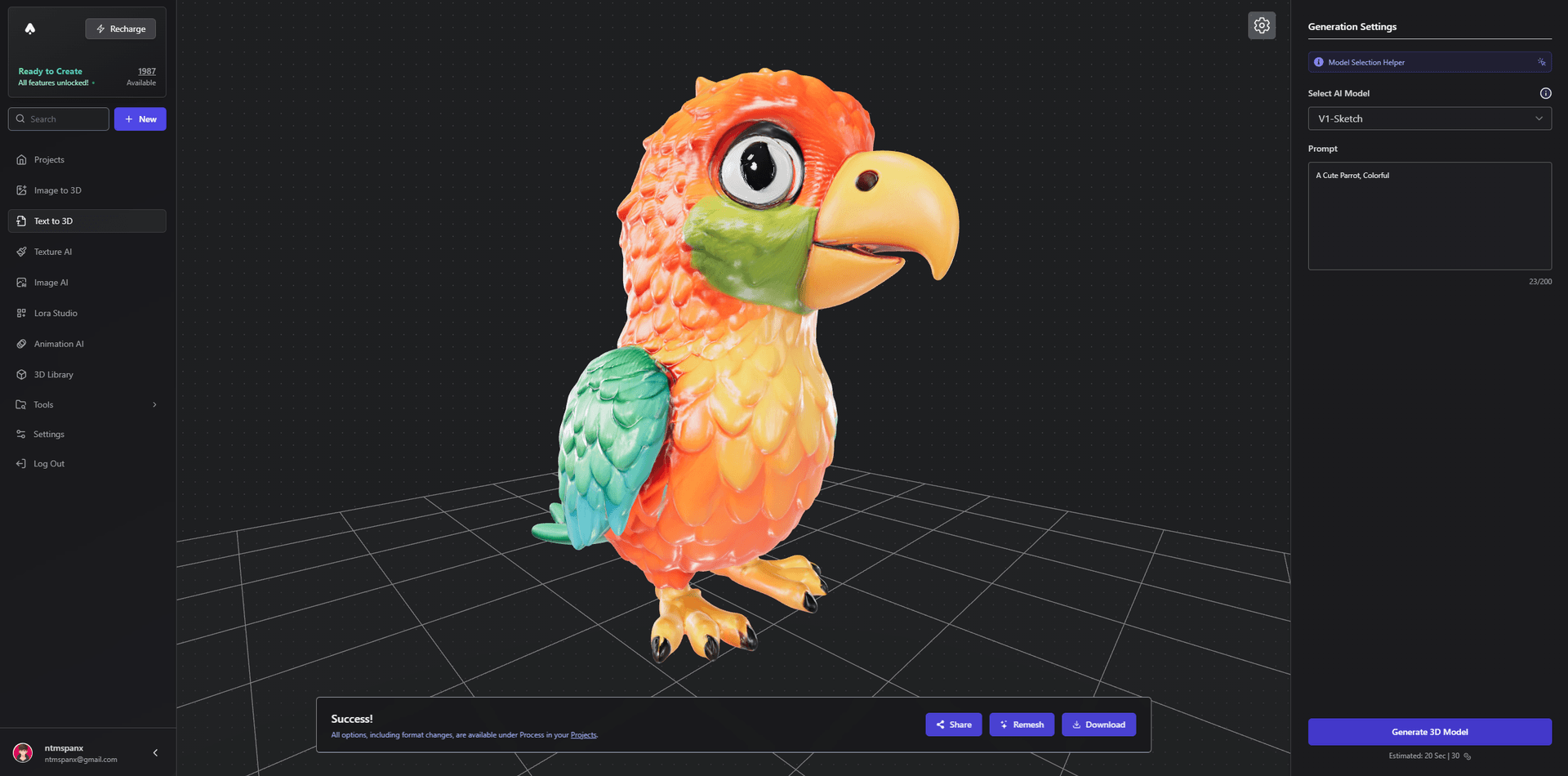From Concept to Creation: How 3D AI Studio Transformed My Creative Workflow
User Background
Marcus Chen, a passionate indie game developer and digital artist, has been creating games for the past five years. With a background in 2D art and basic knowledge of Blender and Unity, Marcus always struggled with the time-consuming process of creating 3D assets for his games. While proficient in game design and programming, the 3D modeling aspect of development often became a bottleneck in his creative process.
Before discovering 3D AI Studio, Marcus relied heavily on asset stores and basic modeling skills to create game content. His dream of creating unique, stylized games with custom assets seemed constantly out of reach due to the technical barriers and time constraints of traditional 3D modeling.

Previous Workflow Challenges
Marcus's previous workflow involved sketching concepts, attempting to model them in Blender, and often settling for store-bought assets when time ran short. Creating a single character could take up to a week, with much of that time spent on modeling and texturing. He experimented with various tools like Blender, ZBrush, and even photogrammetry, but found the learning curves steep and the results inconsistent.
The breaking point came during the development of his latest game project, where he needed to create dozens of unique props and characters. The traditional workflow was simply unsustainable for a solo developer with limited time and resources.

Discovering 3D AI Studio
Everything changed when Marcus discovered 3D AI Studio. What initially caught his attention was the ability to generate 3D models from simple text descriptions. His first experiment was creating a stylized character for his game - a task that would typically take days was completed in minutes.
"I was skeptical at first," Marcus recalls. "But when I saw the quality of the generated models and how quickly I could iterate on designs, I realized this could completely transform my development process."
New Workflow with 3D AI Studio
Marcus's current workflow utilizing 3D AI Studio consists of several integrated steps:
- Concept Generation: Using Image Generation to quickly visualize ideas and create concept art.

-
3D Model Creation: Transforming concepts into 3D models using both Text to 3D and Image to 3D tools.
-
Texture Enhancement: Utilizing Texture Generation to create high-quality, game-ready textures.

- Style Consistency: Training custom models using Lora Studio to maintain consistent game aesthetics.
Impact on Development
The impact on Marcus's game development process has been dramatic:
- Asset creation time reduced from days to minutes
- Ability to experiment with different styles quickly
- More time focused on game design and mechanics
- Increased project scope and ambition

Specific Use Cases
Character Creation
Using the Text to 3D feature, Marcus generated base character models for his game's NPCs. "I can now create an entire village of unique characters in a single afternoon," he explains. "Each character has its own personality and style, something I could never achieve before."
Environmental Props
The Image to 3D tool became crucial for creating environmental assets. Marcus would photograph real objects or create quick sketches, then convert them into 3D models instantly.
Custom Textures
The Texture Generation tool allowed Marcus to create consistent, high-quality textures across all his assets, maintaining a cohesive game world aesthetic.

Technical Integration
Marcus particularly appreciates the seamless integration with game engines:
- Direct export to common formats
- Optimized polygon counts
- PBR texture support
- LOD generation capabilities
Community Engagement
Through 3D AI Studio's Community Creations, Marcus found inspiration and shared his own work, building a network of like-minded creators.
Future Prospects
Marcus is now working on his most ambitious project yet - an open-world RPG that would have been impossible with his previous workflow. "3D AI Studio hasn't just made my work faster; it's expanded what's possible for indie developers like me."
Recommendations for New Users
Based on his experience, Marcus recommends:
- Start with simple props to understand the tools
- Use Lora Studio for consistent style
- Experiment with different prompt styles
- Utilize the community for inspiration and feedback
Looking Forward
Marcus is excited about upcoming features and the potential for even more advanced AI-powered tools. "The rate of improvement is incredible," he notes. "Each update brings new possibilities for creating and innovating."
Ready to transform your creative workflow like Marcus? Visit 3D AI Studio and start creating today. Join our growing community of innovators who are pushing the boundaries of what's possible in 3D creation.